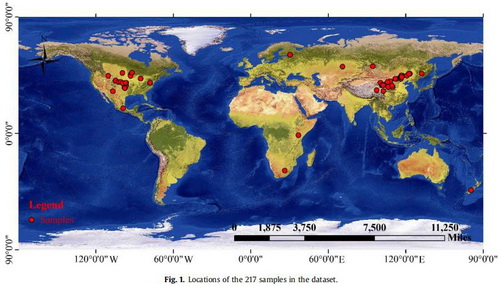Conclusions made regarding plant biomass allocation, trade-off patterns and aboveground/ belowground biomass without considering the existence of perennials in grassland ecosystems are under fifierce debate. This study focused on this issue and brings clarity to allocation patterns; 217 samples were collected across different grassland ecosystems worldwide that contained the mean values of aboveground and belowground net primary productivity (ANPP and BNPP). Based on the relationships between BNPP to ANPP ratio and mean annual precipitation (MAP), the change point was found to divide the habitats into precipitation-limited and precipitation-unlimited conditions. The results show that overall benefifits pointed to ANPP (0.04) and pointed to BNPP (0.13) under different precipitation conditions, respectively. Our fifindings add BNPP to the calculation of precipitation-use effificiency (PUE) and confifirm that PUE may explain the net productivity allocation patterns and trade-offs of ANPP and BNPP under
precipitation-limited conditions. The study highlights production allocation and trade-off patterns under unlimited/limited precipitation backgrounds across global grassland ecosystems and connects PUE with the distribution of productivity, which should benefifit our understanding of the complicated mechanisms of ecological processes.
Above-mentioned progress was published in the Global Ecology and Conservation on July 12 ,2019
Paper link:https://doi.org/10.1016/j.gecco.2019.e00713

